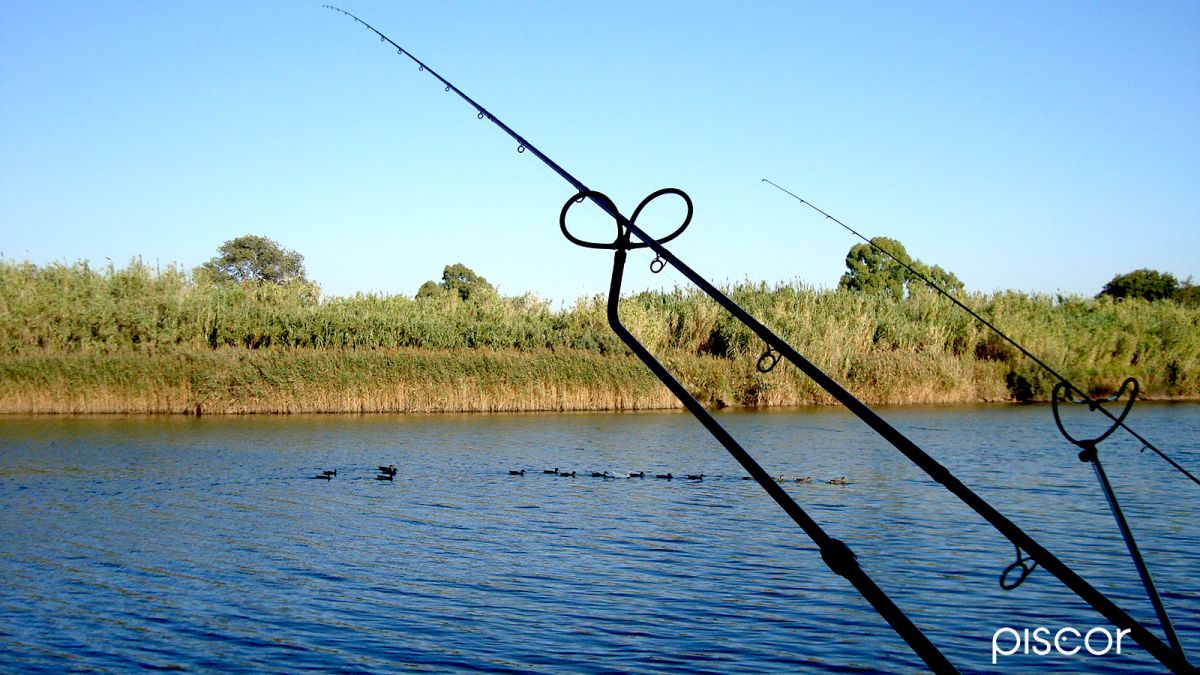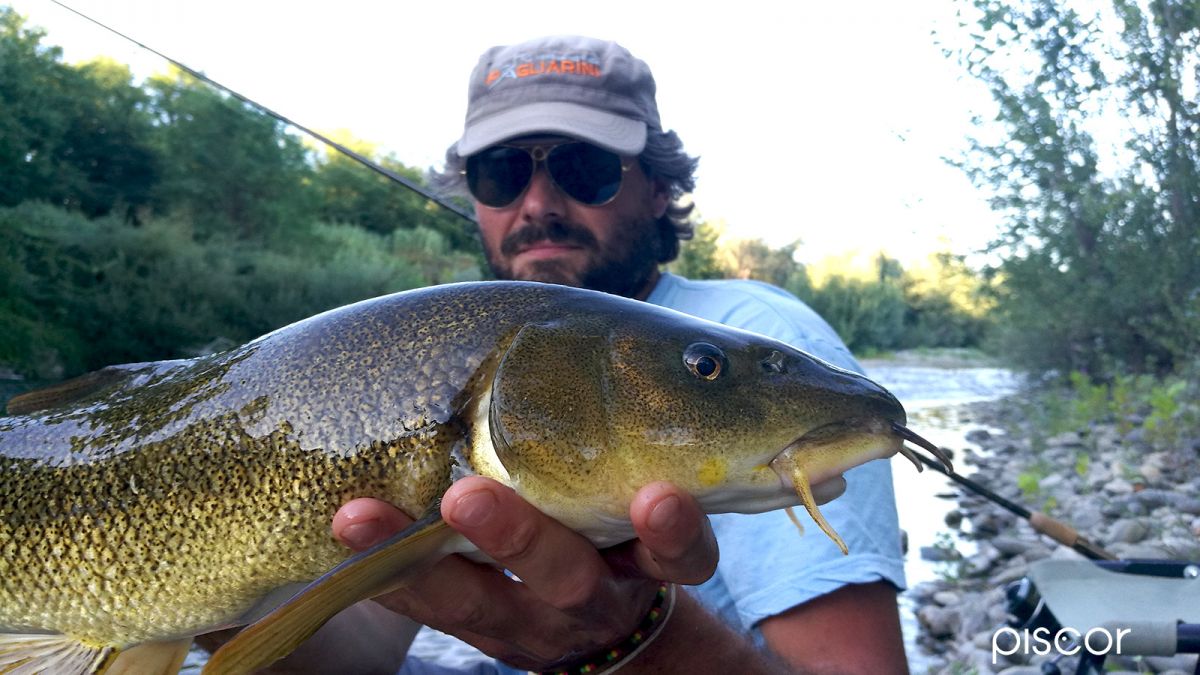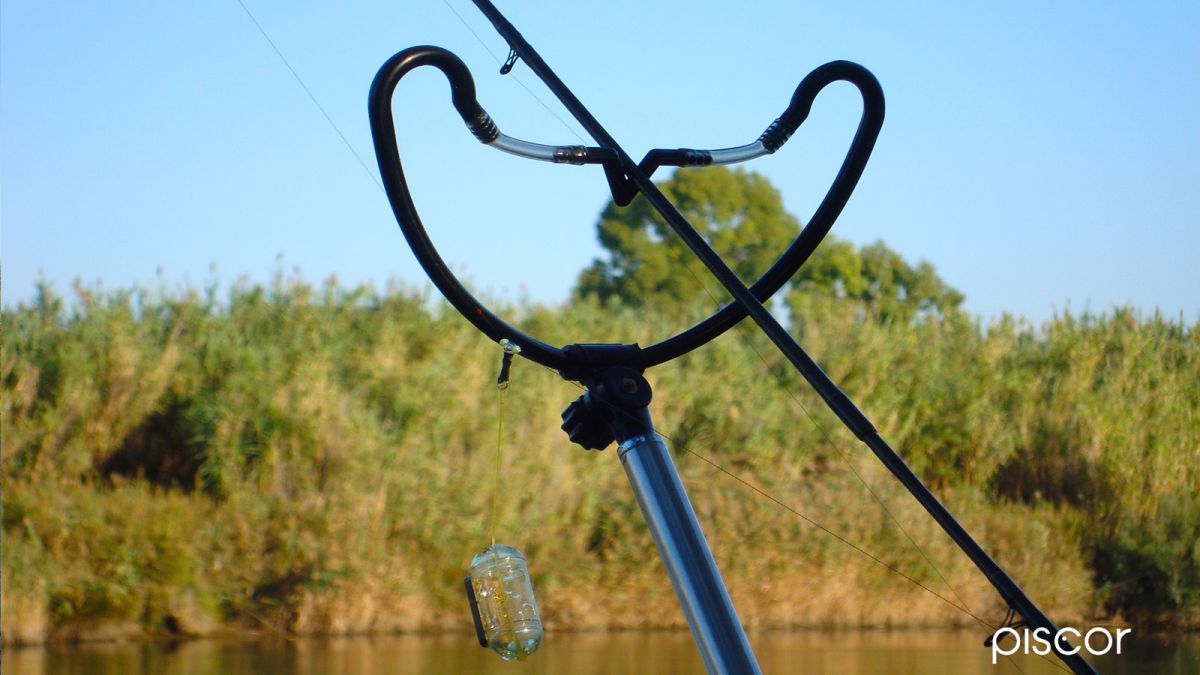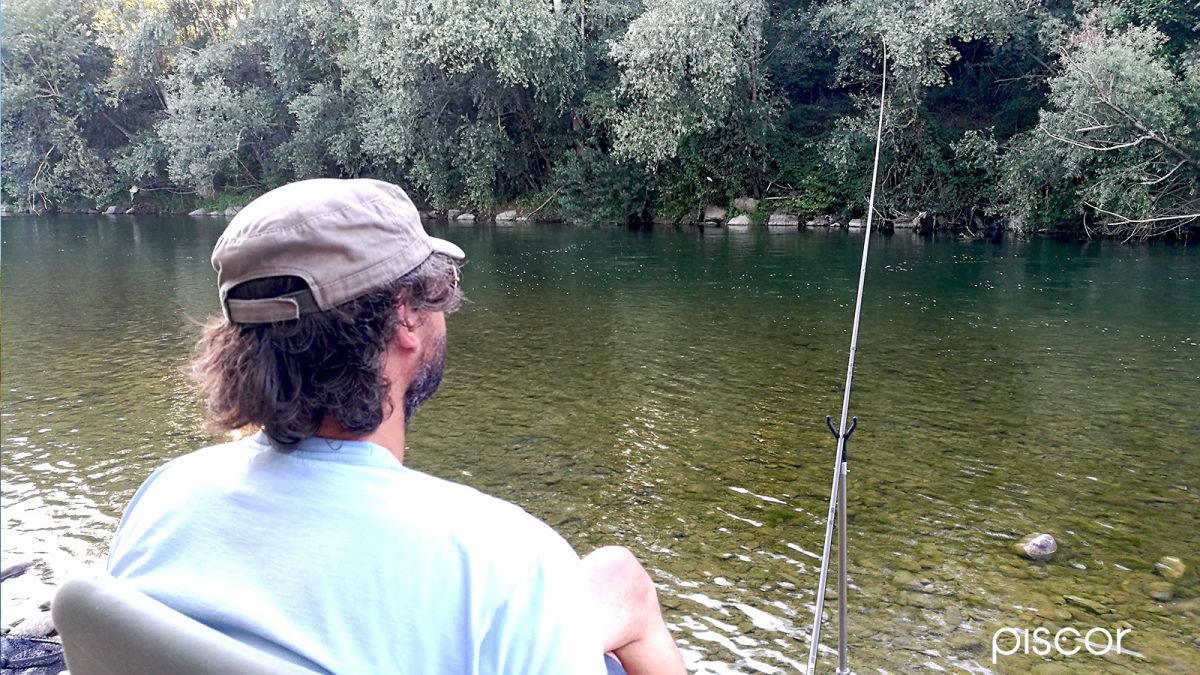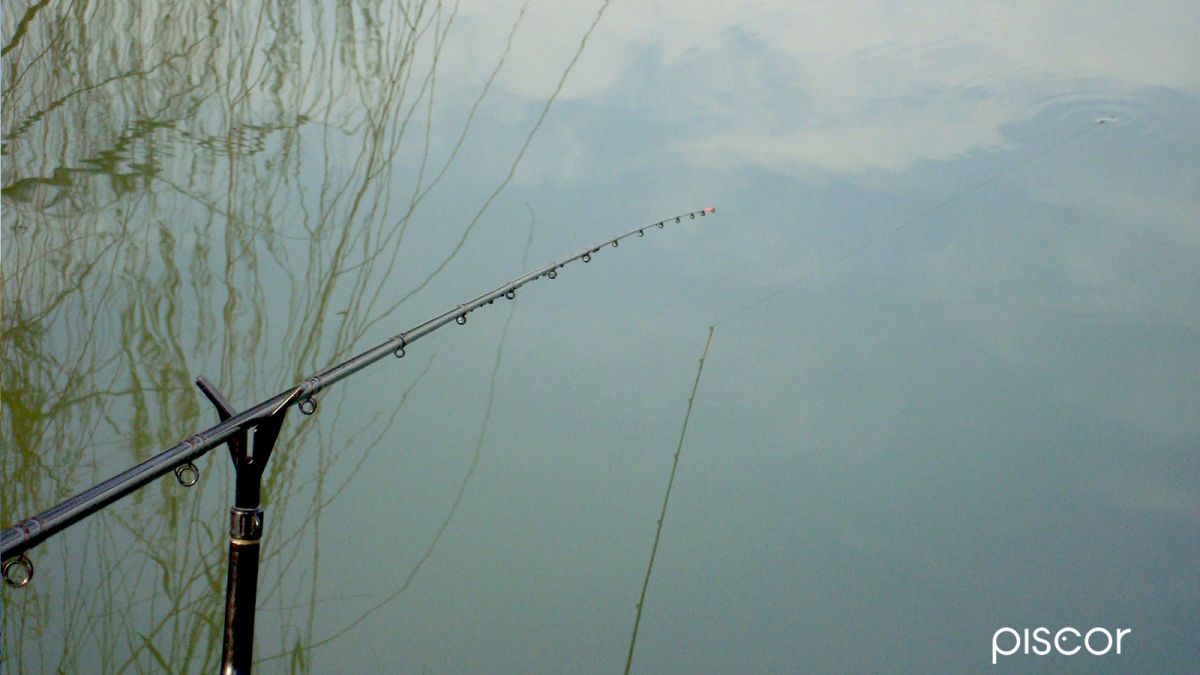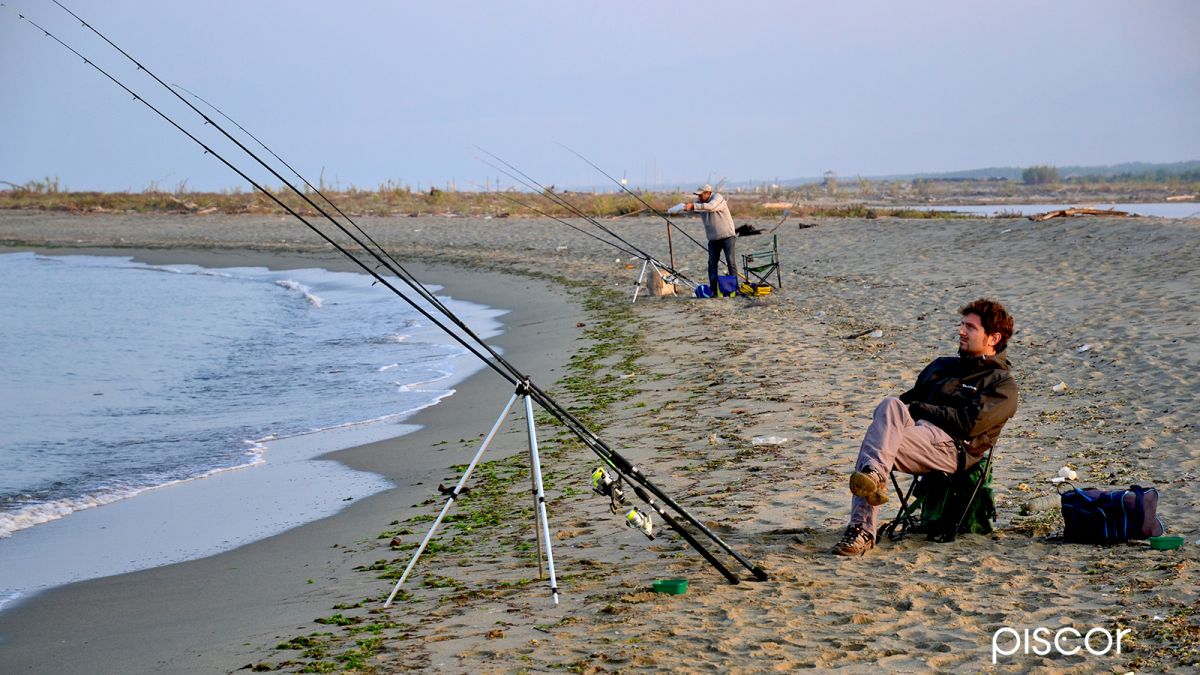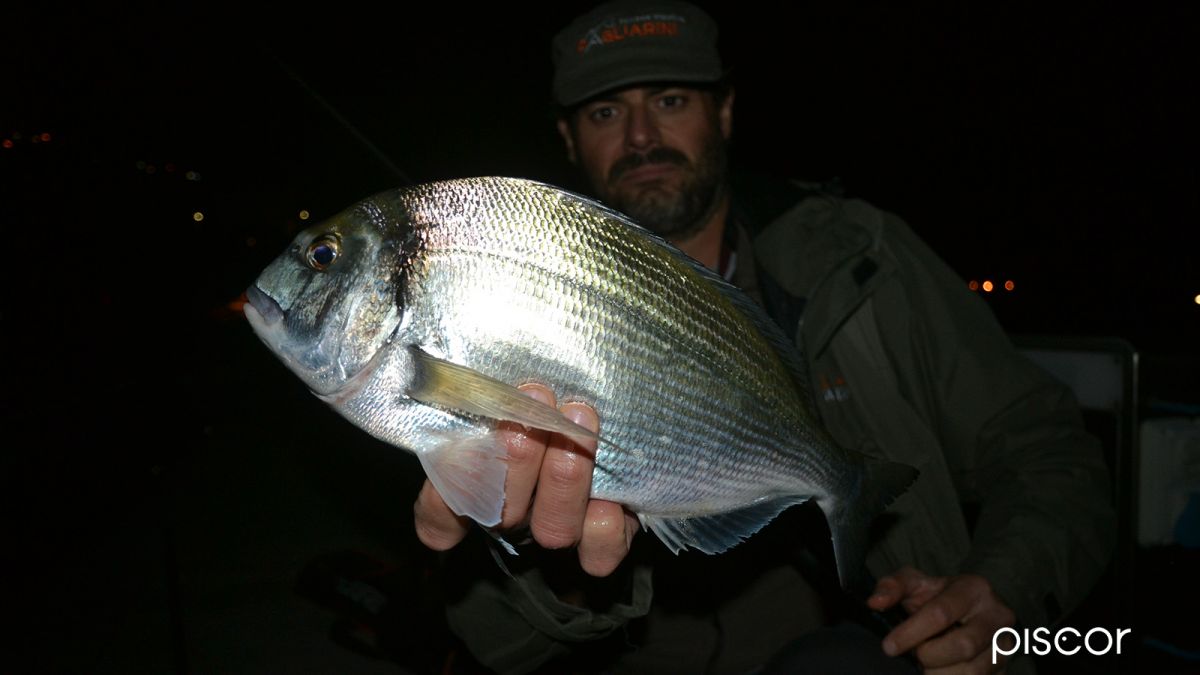The setting of the ledger rod
If in the classic static bottom fishing it is used to keep the rod always and in any case in vertical position, with the tip pointing upwards and the wire well stretched, in an advanced and dynamic bottom fishing like the Ledgering one, the fishing position of the ledger rod (technical name of the Ledgering rod) must be modulated according to the environmental and climatic situation in which you are to operate, being a technical aspect that has a great impact on the fishing action and, consequently, also on the results.
It is no coincidence that on the market of sport fishing (mainly on the English one, which is the largest and most supplied, and then because it is in England, home of Ledgering, where this fishing technique is one of the most used) are offered special supports for Ledgering available in various models, just to give the opportunity to position the ledger rod in fishing always in the best way.
These accessories and the technical criteria by which it is appropriate to place the Ledgering rod on the support we will go on to make a general discussion.
Tips, feeder arms, feeder rests and butt rests
With the exception of particular applications of Ledgering (such as, for example, Touch Ledgering, that is to say, Ledgering practiced "by touch" in running water), this fishing technique usually requires that the rod be kept in fishing resting on a special support, to give it a stable trim, without its very sensitive chimney having to vibrate and bend continuously because of the slight tremor of the arm that holds the rod, or because of any gusts of wind (movements that, having to be distinguished from those produced by the bite, would make it more difficult to perceive them).
The support is made up of a rod support head specific for Ledgering (called "feeder rest" or "ledger rest" and is produced in different models, each suitable for a specific fishing context) screwed on an aluminum rod that can be that of one of those tips also intended for other uses for fishing (to apply the pot, a bowl holder or another fishing accessory) or, better still, that of a feeder arm (or ledger arm), an arm specially designed to support the ledger rod and prepared to be applied to the leg of the bench or platform (thus allowing you to take advantage of the support even if you were to fish on a concrete base or on a ground also so hard as not to allow you to plant the tip).
Among the many models of tips and feeder arm on the market, it is advisable to opt for the longer ones (not less than 1.5 m) and adjustable both in length (by means of a telescopic extension) and in inclination (by means of adjustable joints), so that you can always orient the ledger rod in the best way, resting it in a point of it that is not too close to the stem (we will see better this important aspect in the final paragraph).
To the central support you can add a basal one with a butt rest screwed on top, which is a sort of cup prepared to insert the pedestrian of the ledger rod and also produced this in different models.
Steady water setup
As mentioned in the introductory paragraph, in the Ledgering there are very specific technical criteria at the base of the fishing structure that, depending on the weather and environmental conditions in which we find ourselves, it is appropriate to give the ledger rod so that the fishing action is carried out effectively. In a fishing context characterized by still waters and the presence of wind, it is always advisable to fish with a low rod, keeping the line submerged in water so as not to expose it to wind pressure, which would otherwise cause repeated and annoying flexions of the tip confused with the touches of the fish (the maneuver to be done to sink the line consists in immersing the rod in the water immediately after the launch and, keeping it submerged, then recovering the wire spilled in excess).
Such an arrangement also obliges the rod to be held to one side in order to allow the tip to detect the bite and for optimal detection of the touches, it is advisable to position the rod in such a way as to form an angle of about 90° between the tip and the wire.
Running water arrangements
Contrary to what is foreseen for still waters, normally in running waters it is better to keep the ledger rod pointing upwards (frontally or laterally, depending on how it is best, but always with an inclination of about 45° and not more, because fixing for a long time with your eyes a chimney positioned too high could cause fatigue and pain in the neck) and as high as possible from the ground, in order to have as little wire as possible exposed to the thrust of the current that tends to drag the line downstream (and it is for the same reason that for fishing with Ledgering in running waters generally use ledger rods with a length of not less than 13', English size roughly corresponding to 3.90 m).
Only in the event that the wire over the water is hit by gusts of wind and / or debris carried on the surface by the current is it better to do as for still waters and fish at low rod with the wire sunk, if you do not want to incur in unsustainable bending of the tip (lowering the rod, the current itself to sink, but in this case, however, increasing the pressure of the current on the wire in water, it is necessary to uncoil more to allow the same current to form a "belly" of wire even more pronounced: that of unwinding wire in current so that an arc of wire capable of absorbing the thrust of the mass of water is formed is a tactic of Ledgering called "Bow Method"; in any case, the pressure of the current on the wire in water causes that in fishing the tip remains bent and, as a rule, it will be a sudden straightening of the signal of the bite. In this case the fish will flood itself.
The correct support of the ledger rod
The length and inclination of the support of the ledger rod should be adjusted according not only to how you want to orient the rod in fishing, but also the point of the same at which you will place it on the support, which, if it is too close to the stem, will witness a deleterious tremor of the tip generated by the slight tremor of the arm that holds the rod, while if it is too close to the tip, it will cause an equally deleterious bending of the rod upwards accompanied by a stiffening of the tip that will thus lose much of its sensitivity.
Putting the rod ledger instead on the support at the right point of support of the rod (which is more or less halfway between the tools), the latter will assume a perfectly stable and balanced fishing attitude (in other words, the support must act as a balance of the rod ledger).

